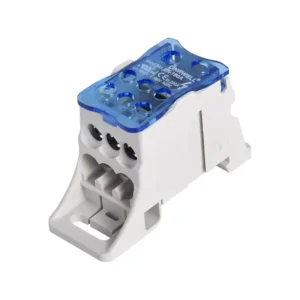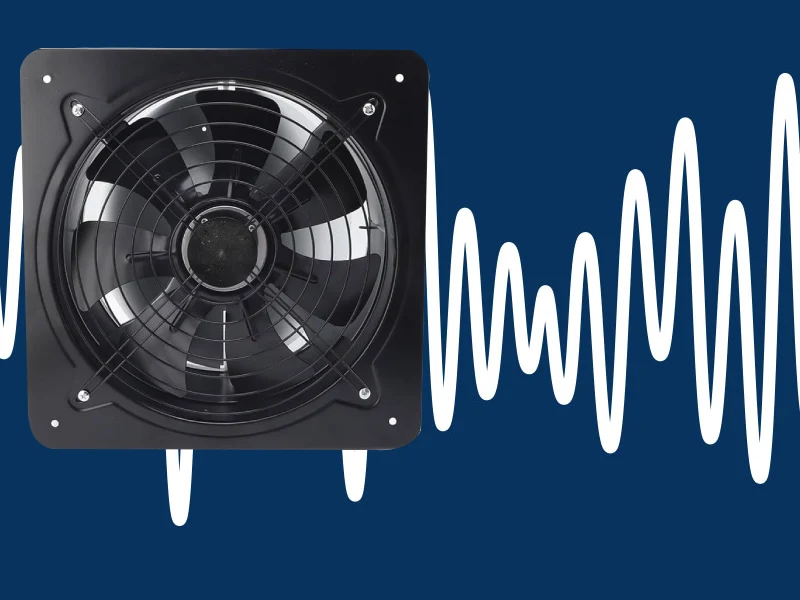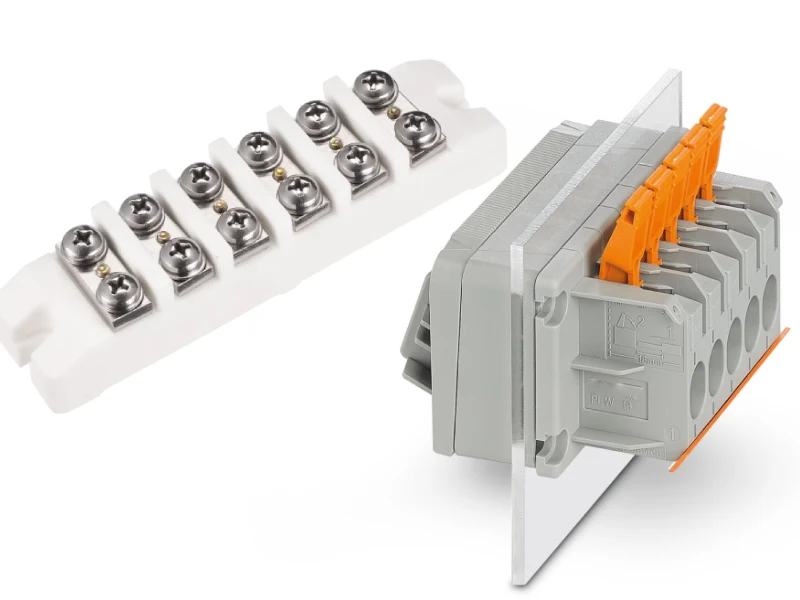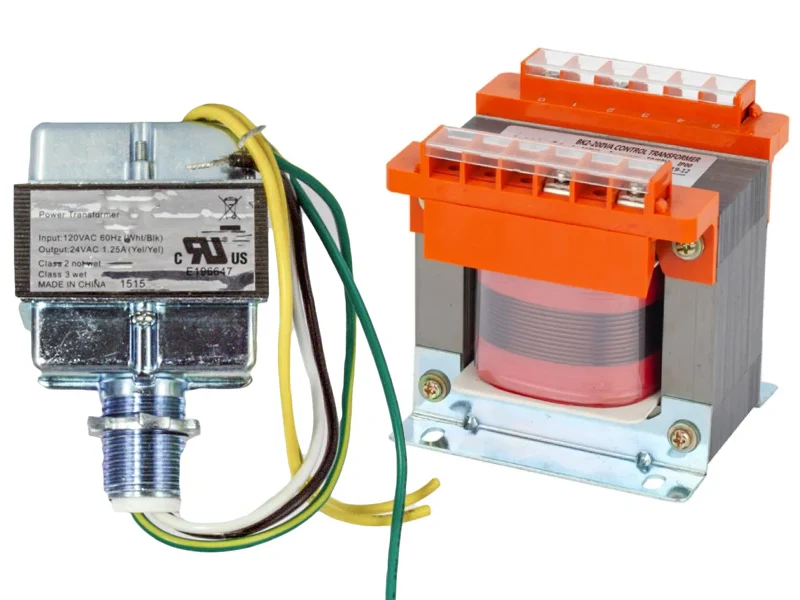If you’ve ever wondered what is a power distribution block, you’re not alone. This vital device takes power from one source and safely splits it into several circuits. You use it to keep your wiring neat and your system running smoothly. Loose connections cause over 30% of electrical failures, so a power distribution block helps you avoid costly problems. With advanced features and strong materials, you get safe, reliable, and efficient power every time.
Power Distribution Block Key Takeaways
- Power distribution blocks safely split power from one source to many circuits, keeping wiring neat and organized.
- They use strong materials like copper and plastic to ensure reliable, long-lasting electrical connections.
- Different types fit various needs, including single-pole, multi-pole, enclosed, and open-style blocks for safety and flexibility.
- Using these blocks improves safety by reducing loose connections and allowing built-in protection like fuses or breakers.
- Proper installation and choosing certified, finger-safe models help maintain a safe, efficient electrical system.
What is a Power Distribution Block
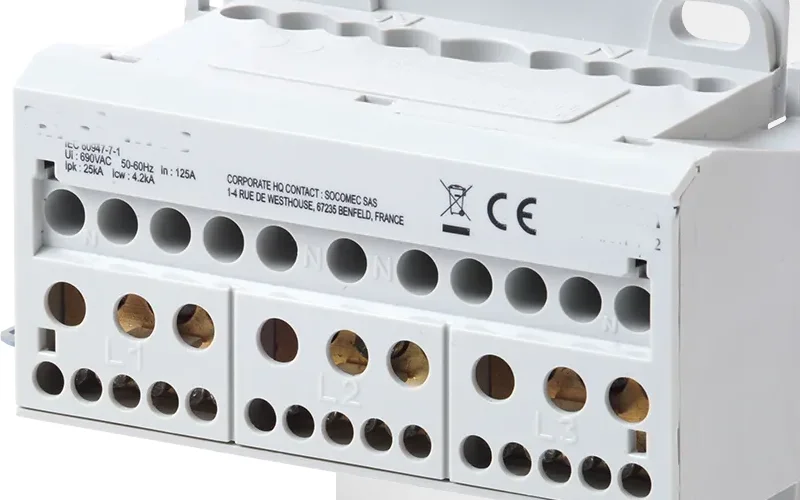
Recommended products
Definition
So, what is a power distribution block? Imagine you have one big source of electrical power, but you need to send that energy to several different devices or circuits. You can’t just twist all the wires together and hope for the best. That’s where power distribution blocks come in. You use these blocks to take electrical power from a single input and split it into several outputs. This keeps your wiring neat, safe, and easy to manage.
A power distribution block acts like a central hub in your electrical system. You connect one large wire from your main power source to the block. Inside, a strong metal bar or plate carries the energy. From there, you can connect several smaller wires to different circuits or devices. This setup helps you organize your electrical connections and makes future changes or repairs much easier.
Tip: If you want to avoid messy wiring and reduce the risk of electrical faults, always use a power distribution block for splitting power.
What is a Power Distribution Block: How It Works
Let’s break down how power distribution blocks actually work. When you bring electrical power into your system, you usually have one main cable carrying all the energy. You connect this cable to the main terminal of the power distribution block. Inside the block, a conductive busbar—usually made of copper or aluminum—spreads the electrical power evenly to several output terminals.
Here’s what happens step by step:
- You centralize all incoming wires from your main power source at the power distribution block.
- The block’s internal busbar receives the electrical power and prepares it for distribution.
- You connect multiple outgoing wires to the output terminals. Each wire leads to a different circuit or device.
- Some power distribution blocks include built-in fuses or circuit breakers. These features protect your circuits from overcurrent and keep your system safe.
- The block organizes your wiring, making it easier to manage, expand, or troubleshoot your electrical system.
Power distribution blocks do more than just split power. They help you distribute electrical power efficiently, reduce wiring complexity, and improve safety. You’ll find them in industrial machines, commercial panels, and even automotive systems. They handle higher currents and voltages than regular terminal blocks, so you can trust them for demanding applications.
Note: If you want to save time and money on installation, power distribution blocks are your best friend. They streamline your wiring and make your electrical system scalable for future upgrades.
When you use power distribution blocks, you get organized, reliable, and safe energy flow. You also make your electrical system easier to maintain and expand. That’s why so many professionals choose them for modern electrical projects.
Components and Materials
Main Parts
When you look at a power distribution block, you’ll notice a few main parts that make it work. First, you have the input terminal. This is where you connect the main electrical cable that brings in power. Next, you’ll see the output terminals. These let you create multiple electrical connections to different circuits or devices. The heart of the block is the conductive busbar. This part carries the electrical current from the input to all the outputs. Some blocks also include covers or shields for extra safety, keeping your electrical connections protected from dust or accidental contact.
Here’s a quick list of the main parts you’ll find in most power distribution blocks:
- Input terminal for the main power cable
- Output terminals for multiple electrical connections
- Conductive busbar for distributing electrical current
- Protective cover or shield for safer wiring
Tip: Always double-check your wiring and electrical connections before powering up your system.
Common Materials
You want your power distribution block to last and keep your electrical connections safe. Manufacturers use strong materials for this reason. Most busbars use copper or aluminum because these metals conduct electricity well. The terminals often use plated metals to resist corrosion and keep your electrical connections reliable. For the housing, you’ll usually see tough plastics or polycarbonate. These materials insulate the block and protect your wiring from heat or impact.
Here’s a simple table showing common materials and their roles:
| Part | Common Material | Why It’s Used |
|---|---|---|
| Busbar | Copper, Aluminum | Excellent electrical conductivity |
| Terminals | Plated Metals | Corrosion resistance, strong connections |
| Housing/Cover | Plastic, Polycarbonate | Insulation, impact protection |
If you want your electrical system to run smoothly, choose a power distribution block with quality materials. This ensures your wiring and electrical connections stay safe, even in tough environments. When you invest in a well-made block, you make your electrical connections more reliable and easier to manage.
Types of Power Distribution Blocks
When you start looking at power distribution blocks, you’ll notice there are several types of power distribution blocks to choose from. Each type fits different needs, so picking the right one helps your system run better and safer.
Single-Pole and Multi-Pole
You can pick between single-pole and multi-pole power distribution blocks. Single-pole blocks have one connection point per block. You can snap them together to create custom setups. Multi-pole blocks come as one unit with two or more fixed connection points. This makes them neat and compact.
DC Power Distribution Block
A DC Power Distribution Block efficiently splits a single DC power source into multiple circuits, ensuring safe, organized, and reliable power management for automotive, industrial, and electronic applications.
What is a Power Distribution Block a quick comparison to help you decide:
| Feature | Single-Pole Power Distribution Blocks | Multi-Pole Power Distribution Blocks |
|---|---|---|
| Number of Connection Points | One per block; modular | Two or more per unit; fixed |
| Modularity | Highly modular | Not modular, but compact |
| Typical Applications | Custom layouts, grounding | Three-phase systems, control panels |
| Installation and Space | Flexible, may need more space | Saves space, easy to install |
| Safety and Organization | Insulated, isolated poles | Neat, easy to maintain |
You’ll often see single-pole power distribution blocks in places like shipyards, mining, or entertainment events. These blocks handle high currents and work well in tough environments. You can gang them together for custom setups, making them perfect for temporary or rugged jobs.
Tip: If you need flexibility and heavy-duty performance, single-pole blocks are a smart choice.
Enclosed and Open-Style
Another way to group types of power distribution blocks is by their enclosure. Enclosed power distribution blocks keep live parts covered, which helps with safety. Open-style blocks, or advanced enclosed models, offer even more safety features. They have built-in shutters, interlocks, and allow you to swap breakers without shutting down the whole system.
| Feature | Enclosed Power Distribution Blocks | Open-Style/Advanced Enclosed Models |
|---|---|---|
| Internal Barriers | Limited | Segregated zones |
| Breaker Access | Fixed, less flexible | Removable, easy to test |
| Live Part Exposure | Higher risk | Minimal risk |
| Fault Containment | Basic | Robust, arc-resistant |
| Maintenance | Full outage needed | Minimal downtime |
| Safety | Relies on procedures | Built-in safety features |
| Best Use | Budget systems | Critical, high-safety systems |
If you want the highest safety and the least downtime, open-style or advanced enclosed models are the way to go. These types of power distribution blocks work best in places where safety and uptime matter most.
Specialty Options
Some power distribution blocks offer specialty features for unique needs. You can find blocks with different pole counts, wire size compatibility, and amp ratings. Modular designs let you combine blocks for custom setups. Some blocks support both copper and aluminum wires. Others have impact resistance, locking features, or color-coded phases.
| Feature/Option | Details |
|---|---|
| Pole Options | Single to 4-pole blocks |
| Wire Size | 4/0 to 14 AWG supported |
| Amp Ratings | Multiple options per pole |
| Design Types | Regular, modular |
| Material Support | Copper, aluminum |
| Special Features | Impact resistance, locking, color coding |
These specialty types of power distribution blocks help you solve complex wiring problems. You get safe, flexible, and easy-to-manage power distribution, no matter how tough your job site is.
Note: Choosing the right power distribution blocks makes your system safer, easier to install, and ready for future upgrades.
What is a Power Distribution Block: Benefits and Applications
Key Advantages
When you use power distribution blocks, you get a lot more than just a way to split energy. These blocks help you keep your electrical system safe and organized. You avoid dangerous wire splicing because all conductor connections stay inside secure boxes or cabinets. This setup keeps live parts covered and prevents accidental contact. You also get overload protection since many blocks can hold fuses or circuit breakers right inside the enclosure. That means your circuits stay safe from too much current.
Here are some top reasons to choose power distribution blocks for your next project:
- Streamlined wiring keeps your electrical panels neat and easy to manage.
- Compact design saves valuable space in control panels and cabinets.
- Fewer connection points mean faster installation and less chance of wiring mistakes.
- Rigid construction and factory-tested connections give you reliable performance and fewer failure points.
- Modular design lets you expand or upgrade your system with less downtime.
- Better safety with secure, insulated connections and covers that only open with tools.
- Lower total cost of ownership compared to traditional cable wiring.
Tip: If you want reliable power distribution and a safer workspace, power distribution blocks are a smart investment.
Common Uses
You’ll find power distribution blocks in all kinds of electrical systems. In industrial settings, they power robotics, HVAC-R, building automation, and energy management solutions. These blocks help you split energy to different machines, pumps, or control panels without a mess of wires. In commercial buildings, they manage multiple electrical connections for lighting, smart metering, and building infrastructure. You get organized panels that are easy to maintain and expand.
In the automotive world, power distribution blocks handle the growing demand for advanced electronics in vehicles. They support features like anti-lock brakes, adaptive lighting, and infotainment systems. Heavy commercial vehicles rely on hardwired blocks for cost-effective, reliable performance and high load capacity. Electric vehicles need efficient blocks to manage complex electrical systems and meet strict safety rules.
Here’s a quick look at how power distribution blocks help organize and scale your electrical panels:
| Aspect | How Power Distribution Blocks Help |
|---|---|
| Power Splitting | Centralizes energy and splits it to multiple circuits |
| Modular Design | Makes upgrades and changes easy |
| Space Optimization | Reduces wiring clutter and saves panel space |
| Safety Assurance | Provides secure, insulated connections for reliable performance |
| Installation Ease | Supports quick, organized setup and maintenance |
If you want your electrical system to grow with your needs, power distribution blocks make it simple. You get safe, reliable power distribution for every application, from factories to vehicles.
Installation and Safety
What is a Power Distribution Block: Installation Tips
Getting your power distribution block installed right makes all the difference for safe and reliable electrical connections. Start by picking a spot right after your disconnect switch or circuit breaker. This placement keeps your wiring organized and makes future changes easier. Always follow the manufacturer’s instructions for mounting. Snap-on DIN rail mounting helps you set up quickly and reduces installation risks.
When you handle electrical connections, make sure you disconnect power first. Use insulated tools and double-check that all connections are tight. Modular designs let you add or remove blocks as your system grows, so you can keep your electrical connections neat. Look for blocks with finger-safe protection. These have recessed screws and wire openings that meet IP20 standards, so you avoid accidental contact with live parts. You won’t need extra covers, which saves time and keeps your wiring simple.
What is a Power Distribution Block table of common installation mistakes and how you can avoid them:
| Mistake | How to Avoid |
|---|---|
| Improper mounting | Secure block per instructions; pick safe location |
| Overloading | Stay within 80% capacity; balance load |
| Poor cable management | Organize wiring; use compatible cables |
| Safety negligence | Disconnect power; use insulated tools |
| Ignoring guidelines | Read manual; inspect before use |
| Loose connections | Tighten and test all electrical connections |
Tip: Always check your electrical connections with a multimeter before powering up.
Safety Features
Modern power distribution blocks come packed with features to keep your electrical connections safe. Finger-safe protection and IP20 or higher ratings mean you can work around the block without touching live parts. Some blocks even reach IP65, blocking dust and water for extra reliability. Cap plugs and modular accessories keep unused openings safe, so your wiring stays protected.
You’ll also find detachable screw terminal blocks for easy troubleshooting. Diagnostic LEDs show you the status of your electrical connections at a glance. Fire-resistant housings made from UL94 V-0 polycarbonate add another layer of safety. Many blocks mount on DIN rails, hiding connections while keeping the front panel visible. This design reduces the risk of accidental contact and keeps your electrical connections secure.
Industry standards matter, too. Look for UL, CE, VDE, or BSI Kitemark certifications. These marks show that your power distribution block meets strict safety and quality rules. When you choose certified products, you protect your electrical connections from fire, shock, and other hazards.
Note: Safe electrical connections start with the right block. Choose certified, finger-safe models for peace of mind.
Power Distribution Block vs Terminal Block

Key Differences
When you look at your electrical panel, you might see both power distribution blocks and terminal blocks. They may look similar, but they serve different jobs. Let’s break down how they compare so you can pick the right one for your project.
What is a Power Distribution Block a quick table to help you see the main differences:
| Aspect | Power Distribution Blocks | Terminal Blocks |
|---|---|---|
| Function | Distribute electrical power from one source to multiple circuits | Connect, organize, and secure electrical wires |
| Configuration | One input terminal, multiple output terminals | Varies widely; can be single or multi-pole, arranged in rows or modular |
| Application | Used in power distribution panels for high power circuits | Used in control panels and electrical enclosures for low-voltage control and signal wiring |
| Voltage/Current Rating | Designed for higher voltage and current levels | Typically for low-voltage control and signal wiring |
| Marking | Marked to indicate input/output terminals and power flow direction | Generally not marked for power flow direction |
Power distribution blocks help you take power from one big wire and split it into several smaller wires. You use them when you need to send a lot of power to different places. These blocks keep your panel organized and save space. You get a simple way to handle many wires without a mess.
Terminal blocks work a bit differently. You use them to connect, organize, and secure wires. They come in many shapes and sizes. Some use screws, others use push buttons or push-in designs. You can arrange them in rows or snap them together for custom setups. Terminal blocks are great for control panels and signal wiring, especially when you need flexible connections.
Tip: If you need to manage high power and keep things neat, choose a power distribution block. For smaller wires and flexible connections, terminal blocks are your best friend.
You’ll notice that power distribution blocks focus on handling higher currents and organizing multiple outputs from one source. Terminal blocks, on the other hand, give you more options for connecting wires in different ways. They support easy maintenance and upgrades, thanks to their modular design.
If you want a safe, reliable, and organized electrical system, pick the right block for your needs. As a manufacturer, we offer a full range of power distribution blocks designed for performance and safety. Reach out to us for expert advice and solutions tailored to your project.
FAQ
What is a Power Distribution Block used for?
You use a power distribution block to split electrical power from one source into several circuits. This keeps your wiring organized, safe, and easy to manage in panels, machines, or vehicles.
Can I install a power distribution block myself?
You can install one if you have basic electrical knowledge. Always follow the manufacturer’s instructions. For complex systems or high voltages, you should contact a licensed electrician.
How do I choose the right power distribution block?
Check your system’s voltage and current needs. Look at the number of circuits you want to connect. Pick a block with the right amp rating, wire size support, and safety certifications.
Are power distribution blocks safe for outdoor use?
Some blocks come with high IP ratings for dust and water resistance. If you need outdoor use, choose a model rated for harsh environments. Always check the product’s specifications before installing.
What’s the difference between a power distribution block and a fuse block?
A power distribution block splits power to multiple circuits. A fuse block does the same but adds built-in fuses for each output. Fuse blocks give you extra protection against overloads.
Need help picking the right block? Reach out to our team for expert advice!
Conclusion
You now know howpower distribution blocks keep your wiring safe and organized. You can choose the right block for your needs by checking ratings and certifications. If you want reliable solutions or have questions, contact us today. Our team will help you find the perfect fit for your project.



